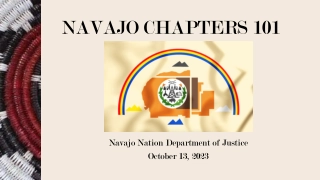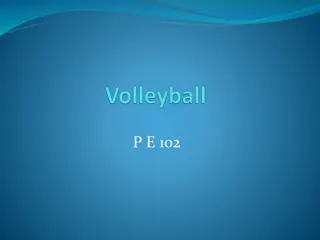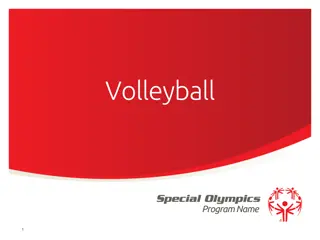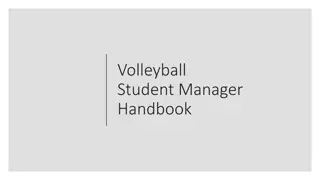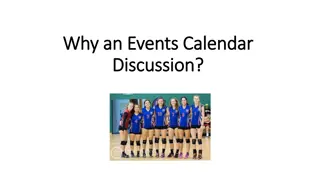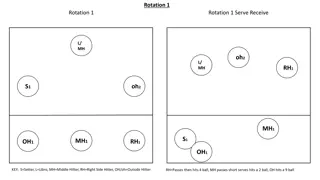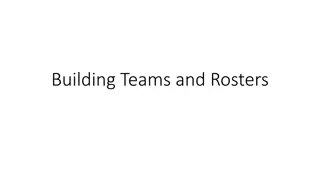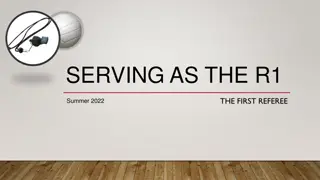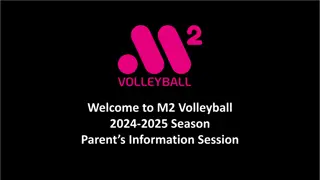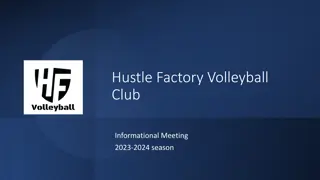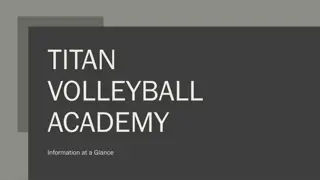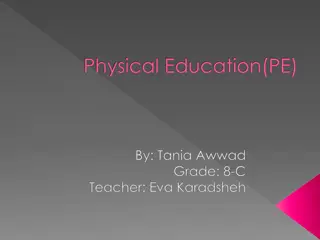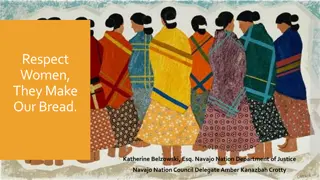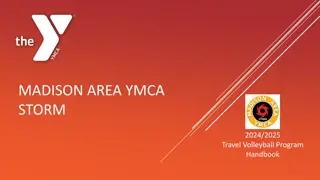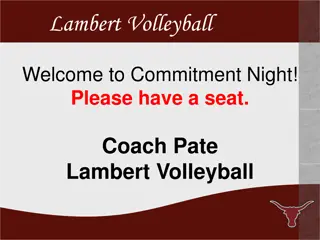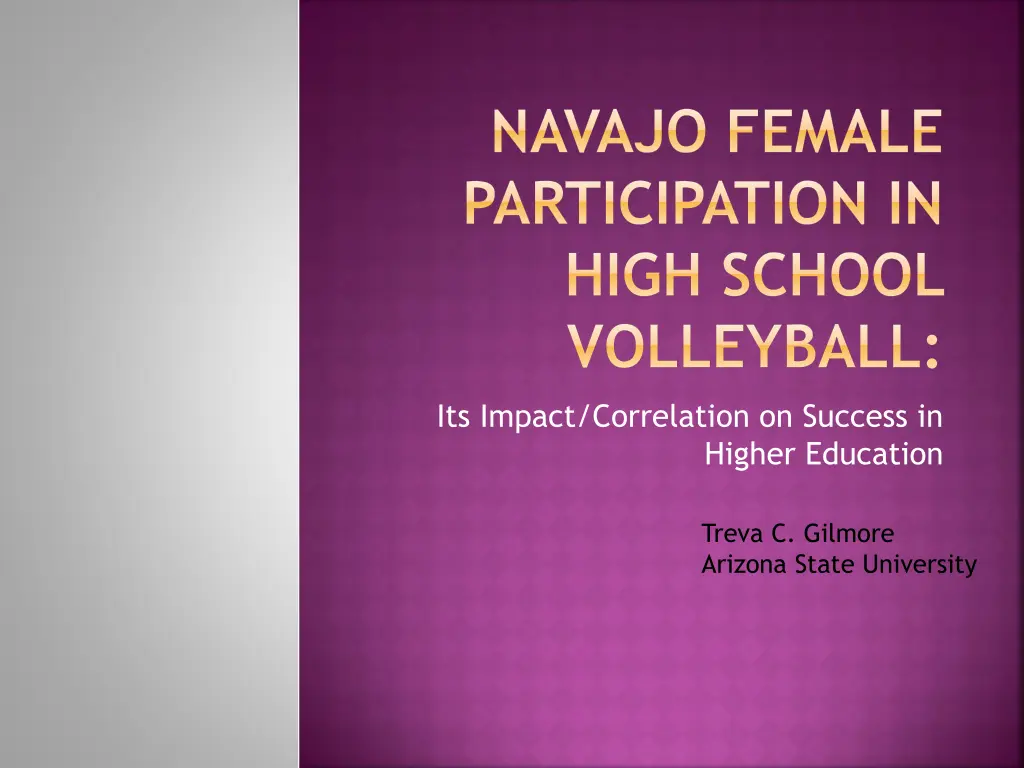
Navajo Female Participation in High School Sports Impact on Higher Education
Explore the correlation between Navajo female participation in high school sports, specifically volleyball, and their success in higher education. Previous studies and statistics shed light on this topic, highlighting the need for further research to understand the influence of athletics, culture, coaching, and community support on Navajo student-athletes' academic achievements.
Uploaded on | 0 Views
Download Presentation

Please find below an Image/Link to download the presentation.
The content on the website is provided AS IS for your information and personal use only. It may not be sold, licensed, or shared on other websites without obtaining consent from the author. If you encounter any issues during the download, it is possible that the publisher has removed the file from their server.
You are allowed to download the files provided on this website for personal or commercial use, subject to the condition that they are used lawfully. All files are the property of their respective owners.
The content on the website is provided AS IS for your information and personal use only. It may not be sold, licensed, or shared on other websites without obtaining consent from the author.
E N D
Presentation Transcript
NAVAJO FEMALE PARTICIPATION IN HIGH SCHOOL VOLLEYBALL: Its Impact/Correlation on Success in Higher Education Treva C. Gilmore Arizona State University
DATA IN PREVIOUS STUDY SHOWS Joseph Pluchinota (1996) said that less than 0.8 percent of all college students are Native American. George Russell (1994) in American Indian Digest reported : 52% of Native Americans graduate from high school 17% attend college 4% graduate from college 2% attend graduate school 2
U.S. CENSUS (2000) REPORTED In a selected population group (135,908) with Navajos alone, 9,379 Navajos earned a Bachelor s degree or higher. 6.9% of the selected population group (25+yrs) 14.25% of the female population 13.3% of the male population
NATIONAL CENTER FOR EDUCATION STATISTICS (2010) # of degrees conferred % conferred to females % Increase # of degrees conferred 1997-98 2007-08 # American NDN/Alaska Natives conferred to females 1997-98 2007-08 1997-98 2007-08 BA 7,903 11,509 60.1 60.7 7% .6% MA 2,053 3,758 61.9 65.9 12% 4% PhD 186 272 55.4 57.7 3% 2.3%
DISSERTATION TOPIC The purpose of this research is to identify, describe, and analyze Navajo female participation in high school volleyball and the impact/correlation it has on the success in higher education.
PREVIOUS STUDIES Traci Nemechek s (1997) Navajo Hoops & Higher learning: A Study of Female High School Basketball Players and their Post- secondary Academic Success. Two hypotheses: Female Navajo participation in high school basketball does contribute to future post- secondary academic success Basketball players support system played a significant role in the student-athletes future academic or athletic success
IMPLICATIONS FOR RESEARCH Gain an in-depth understanding of the impact athletics, Din culture, coaching/mentoring of student-athletes, and the community has on the lives of Navajo female student-athletes in their post-secondary success. Comparison with Nemechek findings Personal ties to the program and own marked success attributed to participation in volleyball Statistics provided contrasts the situation at MVHS & with learning in post-secondary education Navajo female participation is not a common area of study in higher academia
WHY WOULD OTHER EDUCATORS WANT TO KNOW ABOUT IT? Other educators vested in the success of American Indians in higher education would appreciate the impact athletics has in the lives of young female student-athletes. Knowledge gained is invaluable, especially with the focus on Navajo female student-athletes. Identifies ways to recruit and maintain retention in high school & higher education institutions. The data compiled will be useful in identifying the commonalities/trends amongst successful Navajo female student-athletes in higher education.
WHAT DO YOU WANT TO KNOW ABOUT IT? Are results parallel to findings in Nemechek study? How does female participation in basketball and volleyball compare? Does the solidity of the program have similar or different results?
METHODOLOGY Qualitative research, relying on interviews with former student-athletes To maintain accuracy of interviews, the use of voice recording will be utilized Concentrate on athletes who participated in high school volleyball from 2000-2010 school years Select female student-athletes based on availability
INTERVIEW QUESTIONS Define leader ? How did you view yourself in high school were you a leader? Why or why not? Now that you re out of high school and working/going to college, what positive experiences at MVHS prepared you for college success? And what recommendations would you make to better prepare ALL students for college success? What is your general observation of female athletes college enrollment and post-secondary academic success? How does that compare to male athletes? What skills do sports teach student-athletes that prepare them for college enrollment, post-secondary academic success, and life? What advice would you give/have for American Indian youth, especially females, in their quest to attend, persevere, and succeed academically in college? What skills are necessary for college success? What do you attribute these skills to (i.e. home, school, sports, culture, teachers, coaches, family, friends)? Explain the importance or non-importance of Navajo tradition and culture in your life? What people were most influential in your life (i.e. childhood, high school, college)? What impact has athletics had on your life? How important are games/sports/physical fitness to Navajo people? Specifically women? How much of an impact did former MVHS athletic scholarship winners have on your desire to attend college (+/-)? 1. 2. 3. 4. 5. 6. 7. 8. 9. 10. 11. 12. 13.



